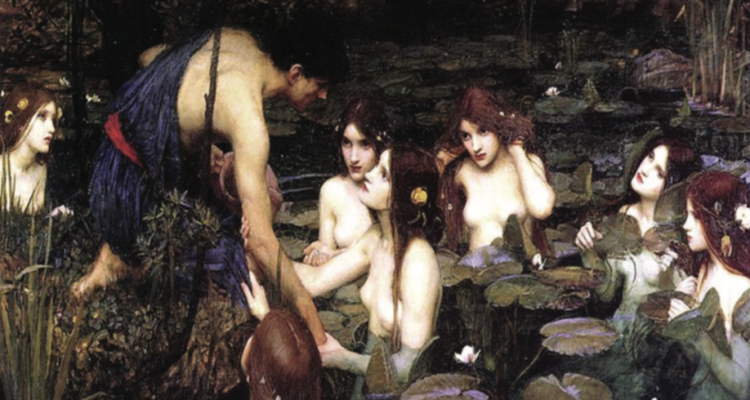Much to their surprise, visitors of the Manchester Art Gallery on Jan. 31, 2018 found a vacancy on the wall of the public art gallery in the United Kingdom. The Pre-Raphaelite painting by John William Waterhouse entitled “Hylas and the Nymphs,” had gone missing.
The 1896 Victorian painting depicts a young Hylas, mythological friend of Hercules, being tempted into a lily pond by seven naked nymphs. Their boundless beauty captures his attention, and according to the myth, Hylas is never seen again, forever lost to the mystery of the nymphs.
In its place on the walls was a large, empty area and small table with Post-It notes. Rather than view the painting, the vacancy offered an area for discussion; visitors could candidly and anonymously share their views about the decision and the impact great art of the past has on the future.
Some art critics cried “censorship,” fearing the Gallery’s decision to remove the painting would start a wave of political correctness. According to a BBC article, curator Claire Gannaway reassured their worries: “It’s not about saying these things can’t exist in a public gallery – it’s about saying, maybe we just need to challenge the way these paintings have been read and enable them to speak in a different way.”
Art history graduating seniors at Fairfield University take a senior seminar their last semester, a capstone to conclude four years of rigorously studying the cultural zeitgeist, the spirit of the times, of societies around the world. This semester, nine women — seven seniors and two juniors — come to class in Canisius Hall every Wednesday to continue to grow in their ability to think critically about relevant topics surrounding society today.
Unfortunately, snow resulted in a missed class on Feb. 7. In lieu of class, Philip Eliasoph, Ph.D., professor of visual and performing arts, began an e-mail thread discussion for students to consider the role art historians play in contextualizing paintings of the past to “explosive, watershed” issues of today. What followed displayed the intelligent, iconic and informed understanding of the past and present that art history majors at Fairfield display.
What exactly is “great art?” Katherine Duncan ’18 explained, “great art is meant to enchant, endure and entice” the viewer, with the ability to transcend and “adapt to different historical and social contexts.”
Agreeing, Alexandra Kosmidis ’18 continued: Great “artwork should be used as a vehicle not only in understanding deeply ingrained societal issues and patterns present, but also as an encouragement for us to discuss these issues candidly.”
“It is by discussing, learning, and understanding the past narratives and components of society,” Anna Milliken ’18 reiterates, “that we can learn the distinction of living in the past, to making change.”
Samantha Curtis ’19 shared that it is important to not only contextualize great art to the relevant topics of today, but also “to understand what these pieces meant in the time they were conceived — to the artist, the public, etc. From there we can evaluate how they manifest within the current societal context.”
Likeminded, Jacqueline Ferreri ’18 believes that the “best way to approach works like this is to recount the time period for which it was created and to understand why it was made… We should be able appreciate the work of art from the perspective of the time period it was created and understand that we must also learn from the past in order to not repeat it.”
I shared similar sentiments by saying, “This fear [of contextualizing] shows a lack of understanding of the cultural zeitgeist found throughout art… Without contextualizing the art or the current debates of the time, great art cannot be fully appreciated or understood.”
This idea of learning from the past shifted the discussion from context to the concern of censorship. As art historians with an understanding of the importance of the past connotations and significance of the word “censorship,” Milliken explains, “The… art museum in society… [is there] as a means of determining the relationship between artist and society.”
Bridget Miles ’18 believes those who turn the discussion toward censorship are “completely overlooking the purpose and outcome it has provoked [because] the rhetoric behind the word censorship is creating a negative connotation with the experience.”
Alexandra Kosmidis ’18 continued to connect the discussions of context and censorship: “The removal of the painting was not done out of undue censorship, but rather, in its absence, created a space for the discussion of the marriage between the current social environment and the museums role in making old artwork relevant to present day.”
Great art is powerful, transformative, and irresistable. With a deep understanding of the nuances of the past through the visual culture, art historians contextualize great art in order for the art to gain more appreciation, exposure, and relevance. Ready to move forward into the art world, the nine soon-to-be graduates of art history are prepared to shape a changing world.


Leave a Reply